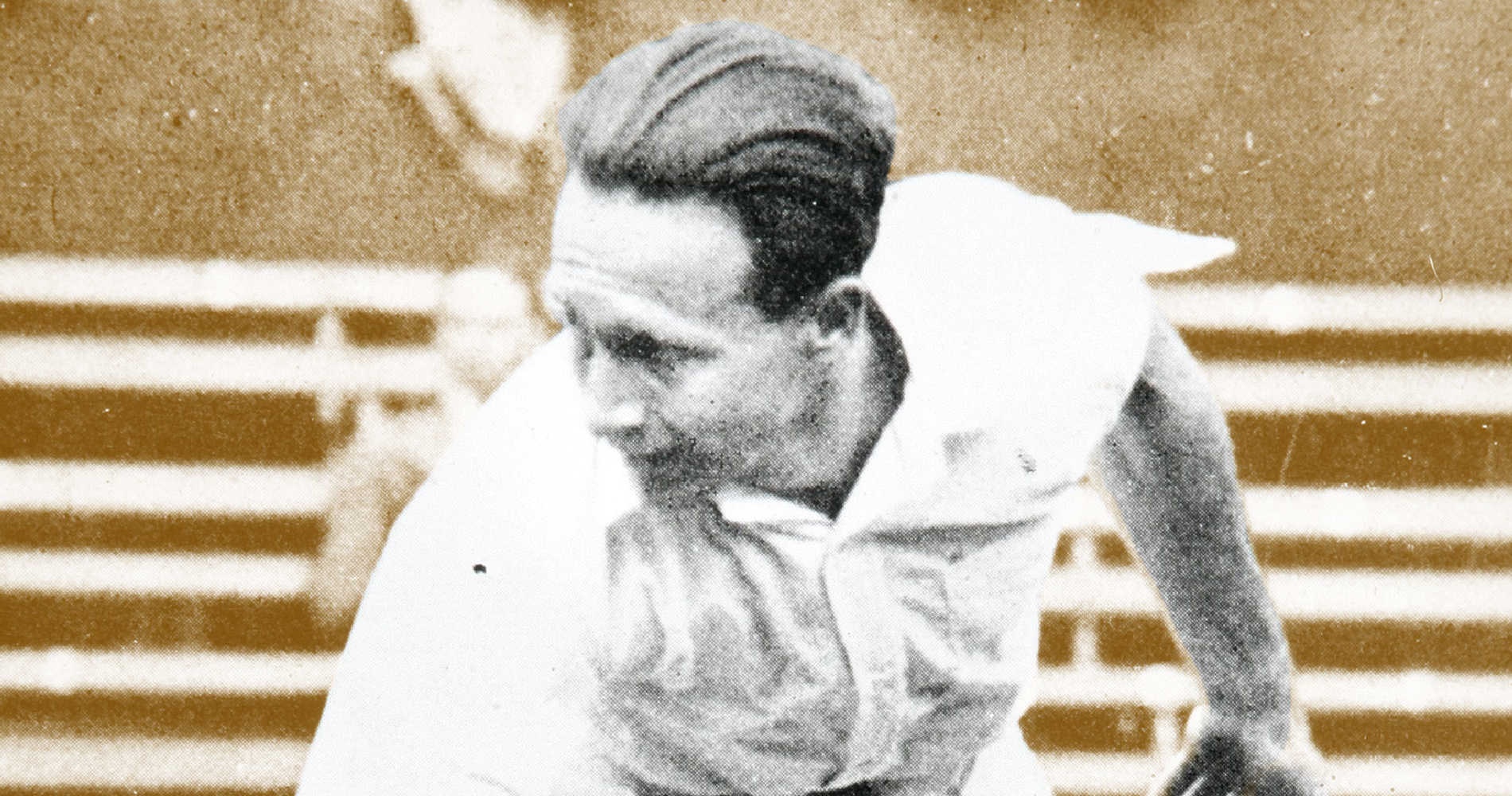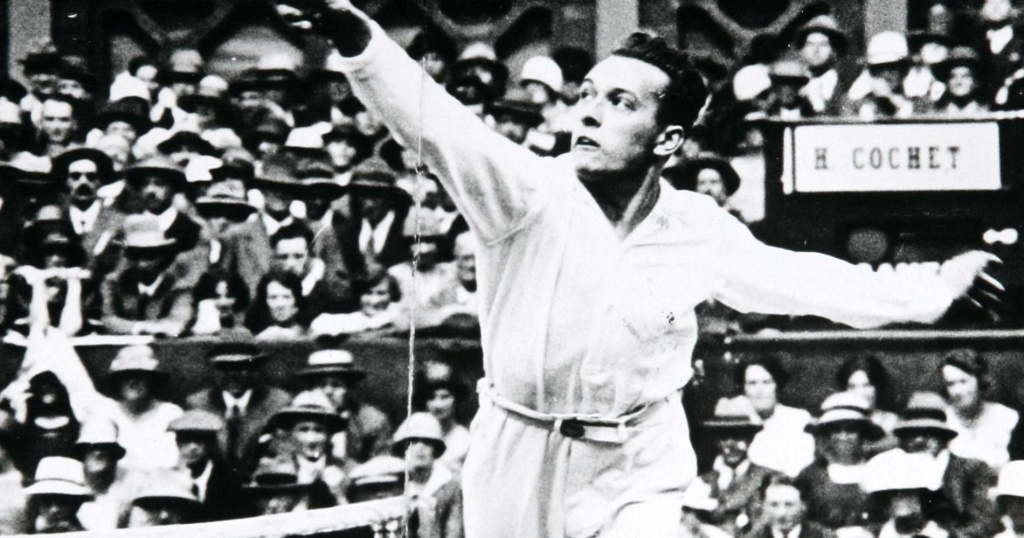July 30, 1928: The day “The Four Musketeers” inaugurated Roland-Garros with a Davis Cup title
Every day, Tennis Majors takes you back in time to relive a tennis event which happened on this specific day. On this day in 1928, the Four Musketeers led France to the second of its six consecutive titles in the Davis Cup
 Jean Borotra, On This Day 07/30
Jean Borotra, On This Day 07/30
What exactly happened on that day?
On this day, July 30 in 1928, Frenchman Henri Cochet defeated American legend Bill Tilden to seal France’s second consecutive Davis Cup title, in a brand new stadium built for the occasion: Stade Roland-Garros. This triumph would turn out to be the second of six consecutive titles for the French team, which would go down in tennis history as “The Four Musketeers.”
The players involved: The Four Musketeers
Henri Cochet (“The Magician”), Rene Lacoste (“The Crocodile”), Jean Borotra (“The Bounding Basque”) and Jacques Brugnon: together, these four players were known as “the Four Musketeers.”
That nickname had been given to them by former American champion Henri Slocum before the 1926 Davis Cup final, and had been quickly popularized by French sportswriters. In 1928, they had already claimed 12 Grand Slam singles titles (Lacoste held six titles, Cochet three, and Borotra three), and numerous major doubles titles.
The Four Musketeers played the Davis Cup together for the first time in 1923. They started by reaching the final four years in a row, losing twice to Australia (1923, 1924) and twice to the United States (1925, 1926).
In September 1927, they finally won the Davis Cup trophy, defeating the U.S. team in Philadelphia. At the time, Cochet had claimed three Grand Slam crowns, the French Open in 1926 and 1928, and Wimbledon in 1927, where he had accomplished the feat of coming back from two sets down three times, saving eight match points in the final against countryman Jean Borotra.

The strength of the American team relied mainly on its leader, the great Bill Tilden. “Big Bill” had been by far the best player in the world from 1920 through 1925.
In those years, Tilden remained undefeated in Grand Slam tournaments, triumphing twice at Wimbledon (1920, 1921) and six times in a row at the US Nationals (1920-1925). From 1926, his domination was challenged, mainly by Frenchmen Rene Lacoste and Henri Cochet: in 1927, Tilden lost to Lacoste in two Grand Slam finals, at the French Open and at the US Nationals. At Wimbledon, he had lost to Cochet after leading two-sets-to-love. On top of that, Lacoste had edged him in the decider of the Davis Cup final. Novertheless, Tilden was still one of the most famous athletes in the world.
The 1928 Davis Cup was held in the brand new Roland-Garros stadium, which had been built for the occasion, as there was no facility that was big enough for such an event elsewhere. In May 1928, the French Open, which had held at the Stade Français in years prior, moved to the new five-court complex.
In 1928, the Davis Cup final was held in Paris, in the new Roland-Garros stadium. At the time, the rule of the Challenge Round still applied, which meant that the 1927 champion, France, automatically qualified for the final and hosted it. This was the reason why, in winter 1927, new facilities had to be built for such an important event.
It was the first time that a Davis Cup final was not to be played on grass, but on European red clay. This was supposed to give an edge to the French players, who were used to the surface.
However, in the first match, Tilden, despite a catastrophic start, took his revenge on Lacoste, beating him in five sets, 1-6, 6-4, 6-4, 2-6, 6-3. In the second match, Henri Cochet levelled the tie to 1-1, beating John Hennessey, 5-7, 9-7, 6-3, 6-0. The doubles point was conquered by the French team, with Jean Borotra and Jacques Brugnon, who prevailed against Bill Tilden and Francis Hunter after a thrilling marathon, 6-4, 6-8, 7-5, 4-6, 6-2.
The Four Musketeers were only one match away from clinching a second consecutive title.
American hopes now relied solely on Bill Tilden, who faced Henri Cochet in the fourth match. Unfortunately, Tilden, who had already played 10 sets in the previous days, was too exhausted to perform at his best in this awaited showdown. Although “Big Bill” gave it his best shot, Cochet outplayed him 9-7, 8-6, 6-4.
France had won the Davis Cup for the second consecutive time, the first time at home, in Roland-Garros, confirming the domination of the Four Musketeers on the game of tennis.
What next: Frances continued domination in the Davis Cup
France would win four additional Davis Cup titles in succession, writing the greatest chapter in the history of French tennis.
In total, the Four Musketeers would not only claim six consecutive Davis Cup titles, but they would also claim 18 Grand Slam titles in singles and 23 in doubles. Rene Lacoste, who would quit tennis because of health issues in 1929, would create the famous Lacoste brand with its crocodile logo, which went on to become at least as famous as his achievements as a player.
Bill Tilden would win a seventh title at the US Nationals in 1929, and a final Grand Slam title at Wimbledon the following year. He would turn pro in 1931, and would thus be prevented from attending Grand Slam tournaments as well as the Davis Cup. After his career, Tilden would make a living as a private coach, until the end of the 1940s, when he would be sentenced to jail after facing sexual charges.







